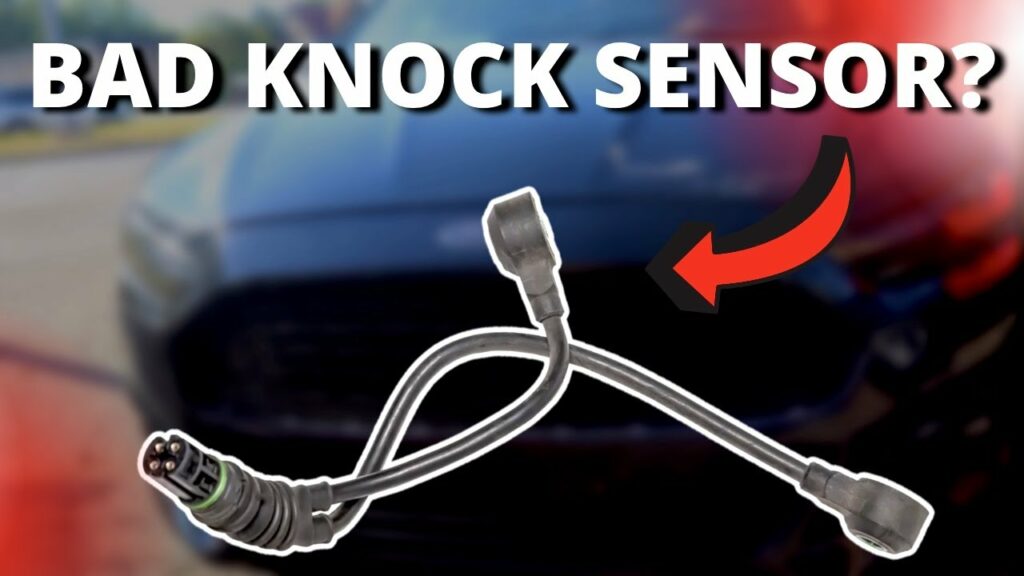
There are a million problems that can occur within your vehicle’s engine. In the past, it was up to the owner and/or technician to go through a long list of potential problems before getting to the root cause of the problem. However, thanks to sensors, today’s vehicles are smart enough to identify issues as they arise.
Hundreds of sensors monitor the condition and operation of a car in real-time. Some sensors monitor oxygen, air, and temperature levels, whereas others, like knock sensors, evaluate vibrations and sound levels to prevent the engine from developing a piston-sized hole. However, there is more to a knock sensor than that, so keep reading to find out more.
What is Knock?
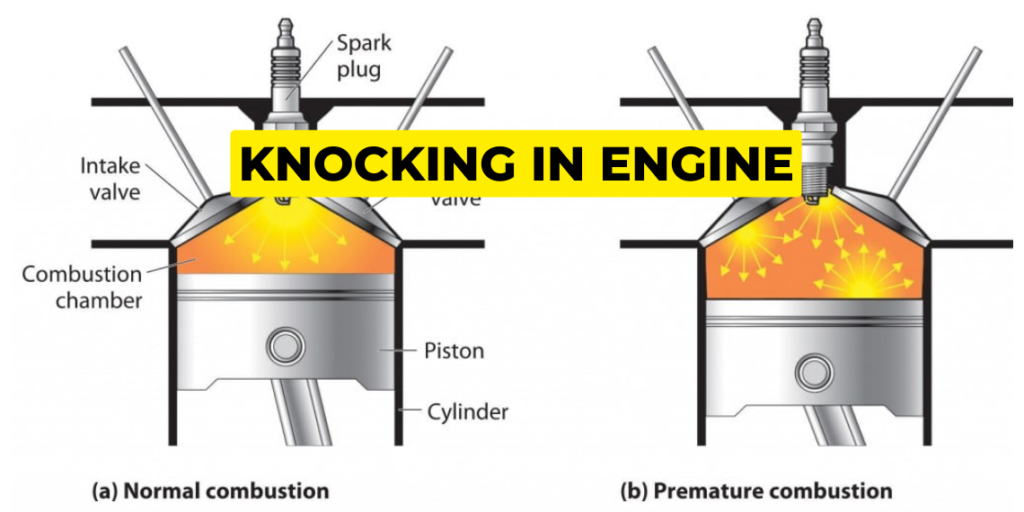
An engine knock, sometimes referred to as an engine ping or detonation, is a sound and reaction produced when a cylinder experiences a second unplanned ignition or explosion apart from the normally regulated ignition caused by a spark plug. Basically, knock is not good for your engine.
When the spark plug ignites the fuel, a flame front is produced that spreads throughout the cylinder. The movement of that flame front pressurizes the remaining fuel mixture and air. Pressure increases temperature, and in certain situations, the temperature rises to the point where a second ignition is produced. When the second ignition creates a second flame front and collides with the first, a knock occurs.
What Is the Sound of an Engine Knock?

You can hear engine knock as a knock, ping, or click coming from the engine. The noise usually gets more noticeable when the throttle is pressed or when the speed is increased.
Causes Of Engine Knock
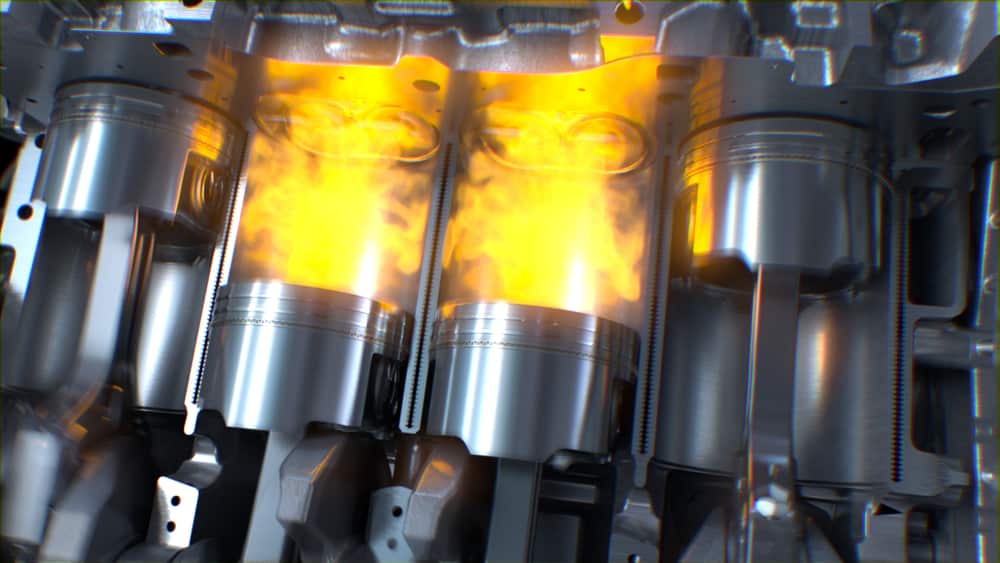
Engine knock may occur for a number of causes.
Here are some potential factors:
- Incorrect timing: The spark is not igniting when it should.
- Improper air and fuel mixture: Incorrect air-to-fuel ratios can lead to ignition issues.
- Deposits inside the cylinder: Contaminants, dirt, and grime can get inside cylinders and cause various problems.
- Damaged, unhealthy, or incorrect spark plugs: Incorrect spark plug gaps, spark plugs with deposit buildup, or the wrong type of spark plugs may result in a poor or incorrectly timed spark.
What Is a Knock Sensor?
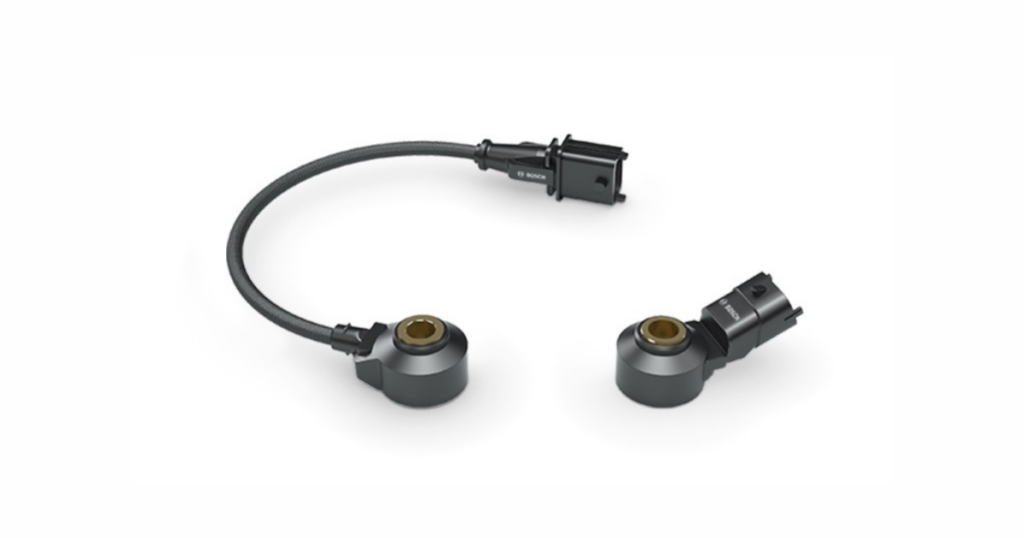
A knock sensor is a small “listening” device present in or on the engine that can detect these knocking noises and vibrations. The knock sensor detects vibration and sound from the engine block, converts them into an electrical signal, and transmits it to the engine control unit (ECU).
After analyzing the data, the vehicle’s computer decides whether or not to adjust the ignition timing. Additionally, it may result in the check engine light (CEL) appearing or even cause a portion of the motor to shut down to protect itself from further damage.
Location of a Knock Sensor
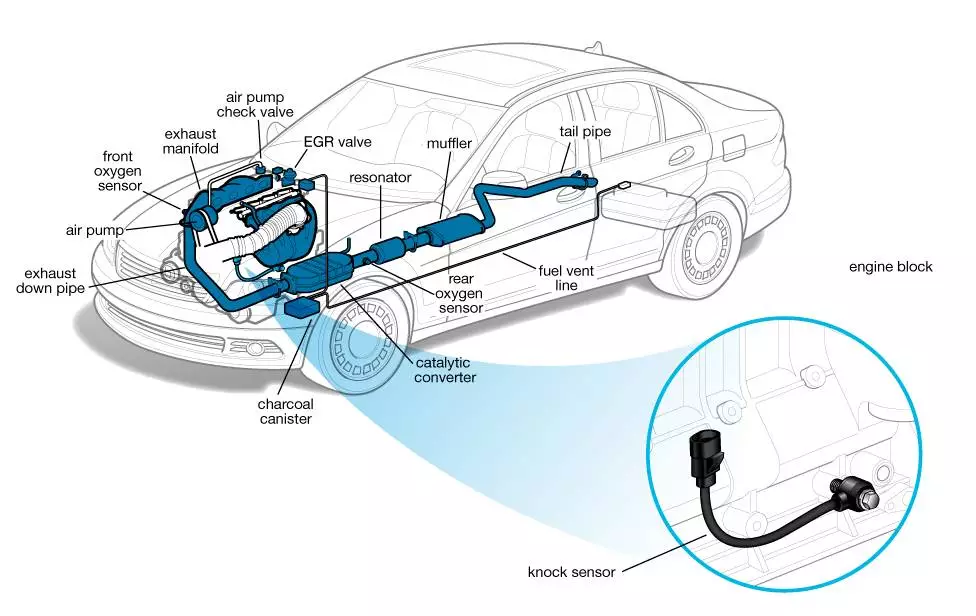
Usually, a knock sensor is attached to the outside of the engine block, but it can also be found underneath the intake manifold.
Importance of Knock Sensors In Modern Vehicles

Modern vehicles rely on knock sensors because of their capacity to identify and stop engine knock. Engine knock can seriously harm an engine and shorten its life, power, and efficiency.
Additionally, knock sensors are crucial to the engine’s performance because they optimize the air/fuel combination. Using the information from the sensor, the ECM can change the timing and amount of fuel injected to get the best performance and gas mileage.
Moreover, knock sensors contribute to lower emissions by enabling an engine to run on a more efficient combustion cycle. This helps to lessen the amount of emissions.
Working of Knock Sensors

A knock sensor is usually a piezoelectric sensor placed on the engine block or cylinder head. The sensor is built to pick up and convert the high-frequency vibrations produced by engine knocking into an electrical signal.
Whenever the engine is running, the knock sensor checks for any indications of a knock. The sensor sends a signal to the ECM when it hears a knocking sound. After that, the ECM adjusts the ignition timing based on this signal to stop additional engine knocks.
The ECM analyzes the signal using a computer and a few algorithms. These are used to filter and process the sensor signal to see if there is a knock, and if so, the ECM modifies the ignition timing.
Besides knock sensors, the ECM uses various sensors to optimize engine performance. It also uses sensors like the Oxygen Sensor, the Throttle Position Sensor, and more.
Common Symptoms of a Faulty Knock Sensor

A knock sensor not working properly can lead to a number of problems.
- Poor engine performance: An engine with a faulty knock sensor may run poorly, with low power and slow acceleration. If the sensor fails to detect a knock, the engine may continue running with improper ignition timing, reducing its performance.
- Decreased fuel efficiency: An inoperable knock sensor may also make the engine burn more fuel than normal. This will lower fuel efficiency.
- Illumination of Check Engine Light: A faulty knock sensor can cause the Check Engine Light to illuminate, signaling an issue with the engine.
- Difficulty starting the engine: Problems starting the engine: If the knock sensor is damaged, the ECM might not be able to set the ignition timing properly, making it hard to start the engine.
A defective knock sensor is not the only cause of these symptoms, and a skilled technician should be consulted to diagnose the underlying issue.
Diagnosis and Repair Of A Faulty Knock Sensor

The process of diagnosing and fixing a knock sensor usually involves determining the signs of a faulty sensor and then using diagnostic equipment and techniques to validate the issue.
A diagnostic scanner or code reader can be used to look for trouble codes related to the knock sensor. This is one of the most popular ways to determine if the knock sensor is damaged. A diagnostic scanner can be linked to the vehicle’s onboard diagnostic (OBD) connector to read and show any codes stored in the engine control module (ECM). If there is a knock sensor code, it means that the sensor is probably broken and needs to be replaced.
A visual inspection can also diagnose a defective knock sensor. This may include checking the sensor for physical damage, such as cracks or other signs of wear and tear, and examining the sensor’s cabling and connections for any problems. Replacing the sensor is usually the first step in fixing a faulty knock sensor. A qualified mechanic can easily remove the old sensor and replace it with a new one.
Frequently Asked Questions
Is It Safe to Drive With a Faulty Knock Sensor?
If your car’s sensor is damaged, it could cause the engine to overheat and increase emissions. The Environmental Protection Agency doesn’t allow such high emissions. The reduced acceleration safety feature was designed specifically for this reason.
What Is Engine Detonation?
The term “engine detonation” refers to the spontaneous burning of the leftover air-fuel mixture in the combustion chamber after regular spark-initiated combustion has taken place. Detonation causes knocking, which damages the cylinder head gasket and the cylinder head.
The Bottom Line
Internal combustion engines utilize knock sensors to detect engine knock or detonation, a metallic banging or pinging sound caused by premature combustion. Modern engines require knock sensors to minimise emissions, protect the engine from damage, and enhance performance. They also contribute to a longer engine life and better fuel efficiency.
A faulty knock sensor can result in decreased fuel economy, poor engine performance, the illumination of the Check Engine Light, and difficulty starting the engine. Therefore, a correct diagnosis and repair are necessary to avoid future engine damage and guarantee peak performance.




